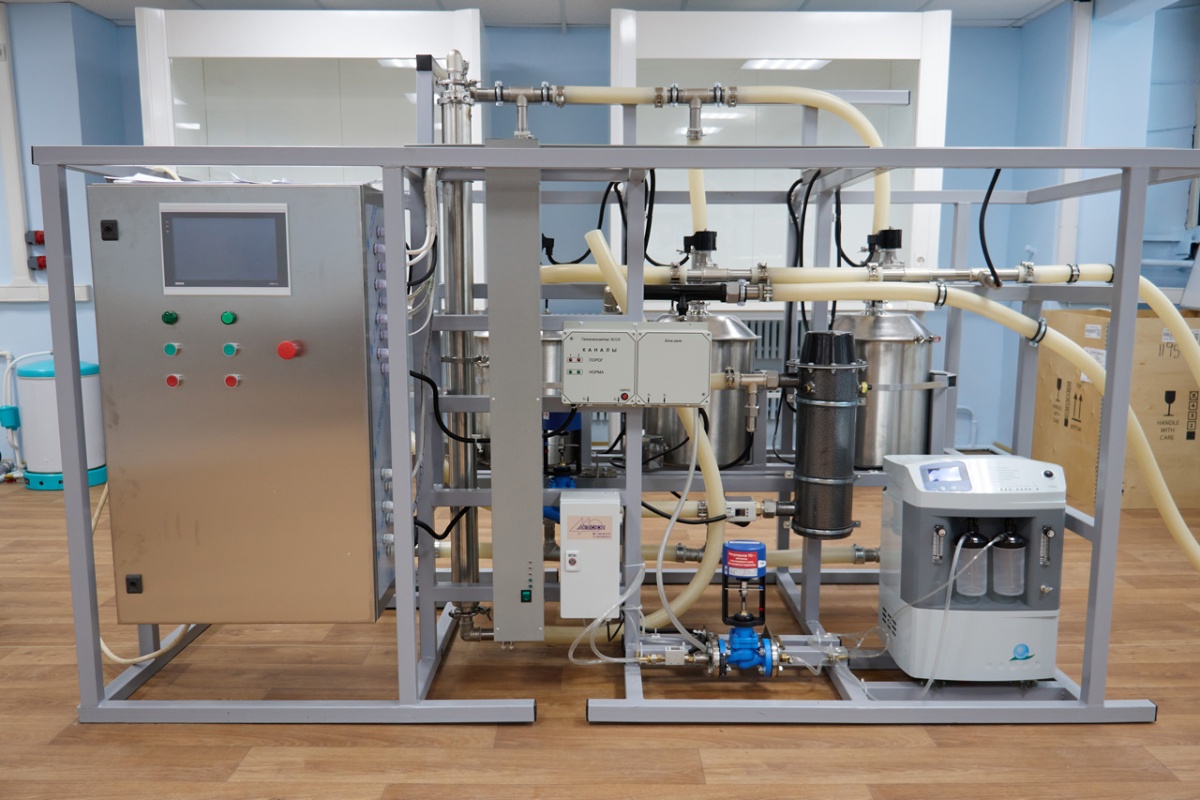A technology unique to the Russian nuclear industry has been developed by order of Rosatom’s fuel company Tvel at the Troitsk Institute for Innovation & Fusion Research (Triniti) as part of Rosatom’s Unified Industry Technical R&D Plan. In the R&D phase, an experimental stand was created to test a decontamination technology using high concentration ozone, and a transportable stand was made for decontamination of NPP pipe equipment.
The technology, focused on the decontamination of equipment made of austenitic stainless steels, has a number of advantages over alternative chemical decontamination methods traditionally used in the industry such as washing equipment with a solution of potassium permanganate.
The use of highly concentrated ozone makes it possible to speed up the cleaning of equipment from radioactive substances, as well as to reduce the amount of secondary liquid radioactive waste (LRW) formed in the process, thereby reducing overall costs. In addition, the secondary LRW does not contain soluble compounds of manganese dioxide, which, simplified the further processing of secondary RW.
“One of the most promising areas for improving the processes of decontamination of NPP equipment is the use of ozone as an oxidising agent,” said Igor Vtorushin, head of R&D at Triniti. “Ozone actively reacts and dissolves the radioactively contaminated chromium oxide film formed during operation on the surface of the reactor’s primary circuit equipment made of corrosion-resistant steel, and the solution does not contain ozone reaction or decomposition products.”
He further explained: “Based on foreign experience of decontamination using ozone, and using the unique competencies of the Institute's scientific staff in the field of ozone technologies, we chose a gas emulsion of highly concentrated ozone for our work. This made it possible to increase the efficiency fourfold compared with the foreign technology. What is especially important is that the stand that implements the technology comprises exclusively Russian-made equipment and materials.”
The transportable stand consists of three main elements: an ozone generation unit, a deactivated pipe equipment connection unit, and an LRW generation unit. At present, the stand works at a laboratory level and allows decontamination of pipelines with a diameter of 16-44mm and a length of up to 10 metres.
In the future, this technology will replace traditional methods of washing with chemical solutions. Moreover, ozone can be used at any nuclear and radiation hazardous facility where there is a need to decontaminate equipment made of corrosion-resistant steels. These can include NPPs and radioactive waste management enterprises, such as production association Mayak, the Mining & Chemical Combine and the Siberian Chemical Combine.
Eduard Nikitin, director of decommissioning programmes at Tvel said: “Our task as an Integrator for decommissioning and radioactive waste management is to accumulate experience, effective solutions and promising technologies that can be transferred to other Russian and foreign facilities. Our customers have needs related to the decontamination and handling of large equipment and its components. And we aim to provide them with the most balanced offer in terms of cost and set of solutions.”
Triniti specialists are planning to improve the mobile stand and to equip it with technological baths for decontamination of equipment with complex geometry and its components. In 2023, it is planned to conduct full-scale field tests at the operating facility.
